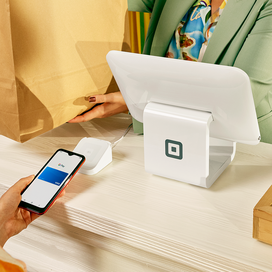Table of contents
One of the biggest holiday weekends of the season is upon us. That’s right: Thanksgiving is closing in, and so is Black Friday, Small Business Saturday, and Cyber Monday. The National Retail Federation recently announced that it’s expecting a significant increase in holiday retail sales, jumping from 2017’s total of $687.87 billion to anywhere between $717.45 billion to $720.89 billion.
Of course, the sectors bringing in the most holiday dough include food and beverage stores with $128.1 billion in 2017, electronic shopping and mail-order houses with $122.1 billion, and warehouse clubs and superstores with $90.9 billion.
Thus, dear business owners, there will be plenty of money to go around between November and December. Now is the time to make a plan for how to bring in the most sales this holiday season.
If you want to come out on top, we have the steps you need to hit the ground running.
Hire seasonal employees
Nothing makes a customer or guest leave quicker than long lines and wait times. Don’t miss out on a possible sale because you didn’t have a worker available to assist them. Avoid angry customers by adding seasonal employees to your crew.
According to NRF’s forecast, retailers could add between 585,000 and 650,000 temporary workers this holiday season, an increase from last year’s 582,500. But it’s a competitive job market, so make sure you read up on tips for hiring seasonal workers.
Store hours
Deciding on store hours during the holidays can get a little tricky. Do you close on Thanksgiving Day and reopen on Black Friday, or do you observe regular store hours?
Though many stores are closed on Thanksgiving Day — including electronics giants such as Apple — many superstores such as Wal-Mart and Target close during the day and reopen at 6 p.m. that evening to prepare for any midnight/Black Friday doorbusters.
This decision depends on the number of employees your business has — a place like Target, for example, has enough full-time and seasonal workers to man the store through the evening, overnight, and next day without tiring out its team. It also depends on the type of customers you serve. Is your customer base interested in doorbusters, or does it not mind coming in to shop on Friday morning?
Stocking inventory
One surefire way to upset a customer is to run out of the product advertised in your store’s holiday sale. Before the season arrives, do a full analysis of your inventory: See which products sold well during the last holiday season (and which didn’t), and make sure you have enough space inside your store to hold any additional inventory.
If you don’t have an inventory management system, get one. Look for one with alerts so you get notified before you run out of popular products. If you already have a system, clean it up so you aren’t slowed down by operational issues during your busiest times.
If you sell online, streamline your order fulfillment process so you get your products into your customers’ hands seamlessly. Finally, label all your inventory to avoid sending the wrong orders to the wrong customers.
Start marketing
The Thanksgiving shopping weekend is noisy. If you want to get people to your store, the first thing you need to do is let them know that you’re going to be open. It also helps if you have some sort of promotion or sale going on (since everyone else will).
Also, don’t be afraid to be as creative as possible. Maybe offer a personalized holiday combo to boost sales, or create a holiday gift guide to help your customers pick the right gift for themselves or a loved one. If you sell online (and can swing it), offer free shipping. It works like a charm every time.
One of the best ways to ensure your regular customers know about your holiday sale is to launch an exclusive promotion through your email list. This makes your foundational customer base feel special, and adds a sense of urgency to grab the good deals before the sale ends.
Want to reach new customers? Think about investing some money in advertising. You don’t have to invest a ton. Social media ads allow you to target your promotion to a specific audience at scalable cost.
![]()












